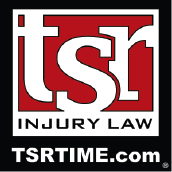How the Extent of Vehicle Damage May Impact a Car Crash Claim
 There are various things that can affect the value of a car crash claim. They include the type and severity of the injuries suffered, how you respond to treatment, wage loss from injuries, the insurance policy limits, and more.
There are various things that can affect the value of a car crash claim. They include the type and severity of the injuries suffered, how you respond to treatment, wage loss from injuries, the insurance policy limits, and more.
One of the important factors they look at is the extent of damage to the vehicles involved in the collision. Rightly or wrongly, they assume it is unlikely for people to suffer significant injuries if the vehicle they were in sustained little damage. They are more likely to agree a victim suffered a severe injury if his or her vehicle was totaled or sustained extensive damage.
If the victim’s vehicle was totaled or severely damaged, it can be easier for the victim’s attorney to prove the victim suffered serious injuries. This may also improve your chances of recovering full compensation for your damages.
Below, we discuss how the extent of vehicle damage may impact a Minnesota car crash claim. If you have questions about taking legal action after a car accident, we are prepared to help. There are no upfront fees when you hire our services.
Schedule your free legal consultation. TSR is here to help: (612) TSR-TIME.
Vehicle Damage Can Help Indicate Fault for a Crash
The location of damage helps to show how the crash occurred. Attorneys and insurance companies can work backward from the damage location and severity to determine how fast vehicles were traveling and their position before the collision. The location of the damage may also help indicate who had the right of way.
For example, if the passenger side of your vehicle was damaged and the crash happened in an intersection, the other driver was likely turning left. In a crash like this, one of the drivers probably did not have the right of way.
If the front quarter of the at-fault driver’s vehicle was damaged and that driver was attempting to make a right turn, it may indicate the driver who was turning is at fault. This driver may have had a red light and it was not safe to make the turn.
On the other hand, the approaching driver may have had a red light while the turning driver had a green light. In this situation, the approaching driver may be at fault for running a red light.
These are just a few of the many examples of how vehicle damage can tell you things about how and why a crash happened and who may be at fault.
Vehicle Damage Helps Support the Value of Your Damages
There are many ways vehicle damage could help support the value of a claim for damages. For example, the faster cars are traveling when they collide, the more severe the damage is likely to be. The more severe the damage, the more serious the injuries are likely to be.
Severe damage often indicates who had the right of way. Severe crashes often happen when one driver violates another driver’s right of way, such as by running a red light. The driver who has the right of way often does not have much time to slow down or move out of the way. The result is likely a collision that causes a lot of damage.
Distracted driving crashes often cause severe damage because the at-fault driver may not slow down at all before the collision. He or she may not look up from his or her phone until a second or split second before impact.
Your attorney can consult vehicle crash test reports to show the type of impact that would be necessary to cause the damage your vehicle suffered. This can be strong evidence about the cause of the crash and who may be at fault. Crash test data may also indicate the types of injuries that would be likely to occur in different types of crashes.
Insurance Company Biases Related to Vehicle Damage
Insurance companies have a variety of biases that they apply to claims. For example, they often do not consider soft-tissue injuries to be that serious.
They also do not think serious injuries can result from crashes that cause relatively minor damage. The damage from a rear-end crash may not be severe – the bumper may need to be replaced and there might not be significant damage to the vehicle frame. That said, the driver may have suffered whiplash that affects him or her for months afterward and requires regular treatment.
The value of this claim could be considerable, and the insurance company may try to lowball you. They may tell you that your vehicle was not seriously damaged so you should not need the amount of compensation you are claiming.
It is important to note insurance companies are always looking for an excuse to deny or devalue a claim. Even if your crash resulted in significant vehicle damage, the insurance company may try to lowball you.
Call TSR Injury Law Today for Legal Assistance
Our firm has been recovering millions in compensation for our clients for decades. We are deeply committed to your best interests.
At TSR Injury Law, you are not a number. Our Bloomington car accident attorneys understand this is a difficult time for you, and we are here to help. We are available to answer your questions throughout the legal process.
Give us a call to learn more about our services: (612) TSR-TIME.



